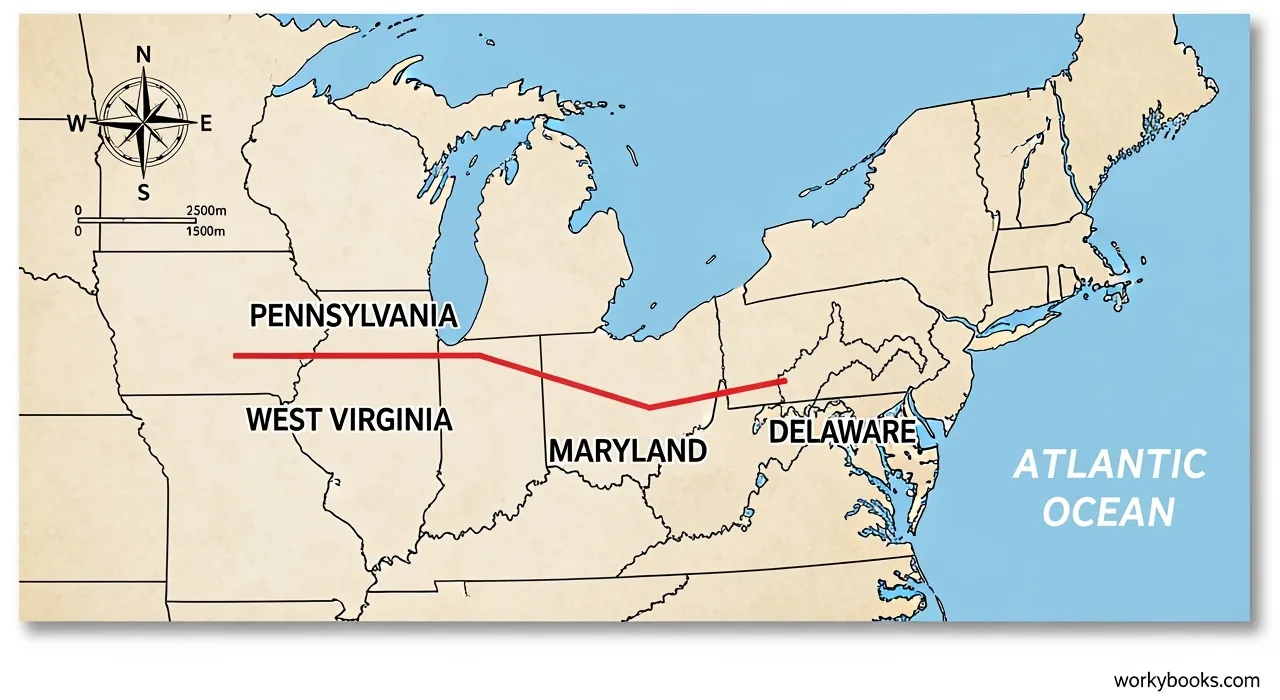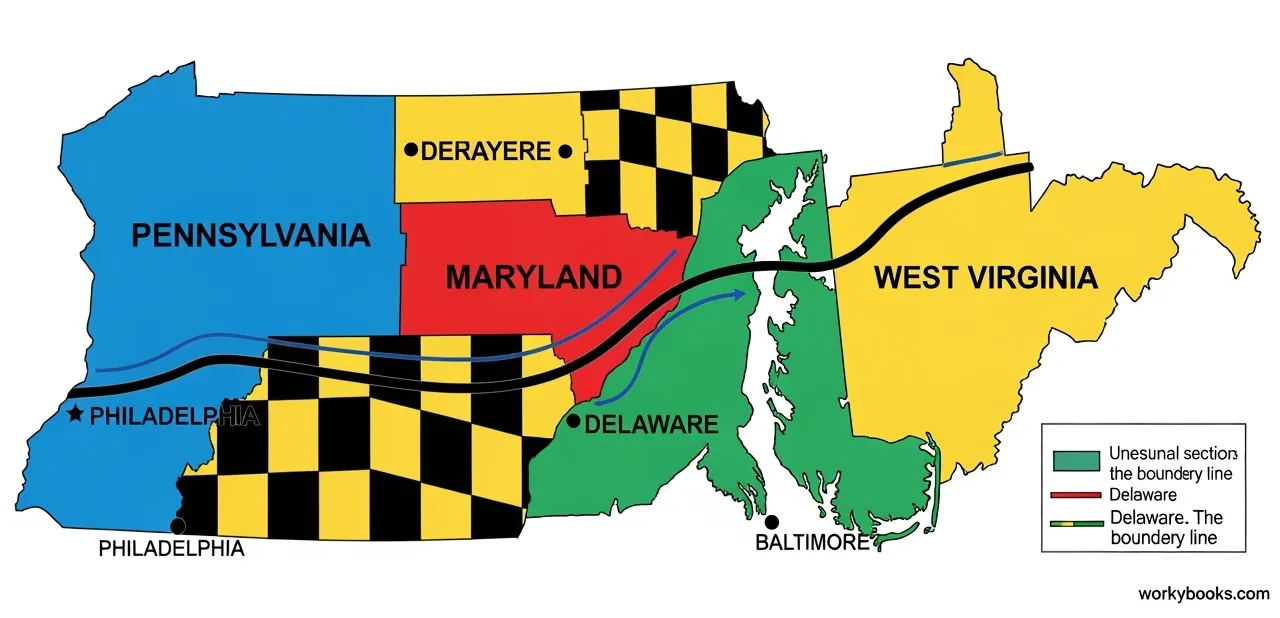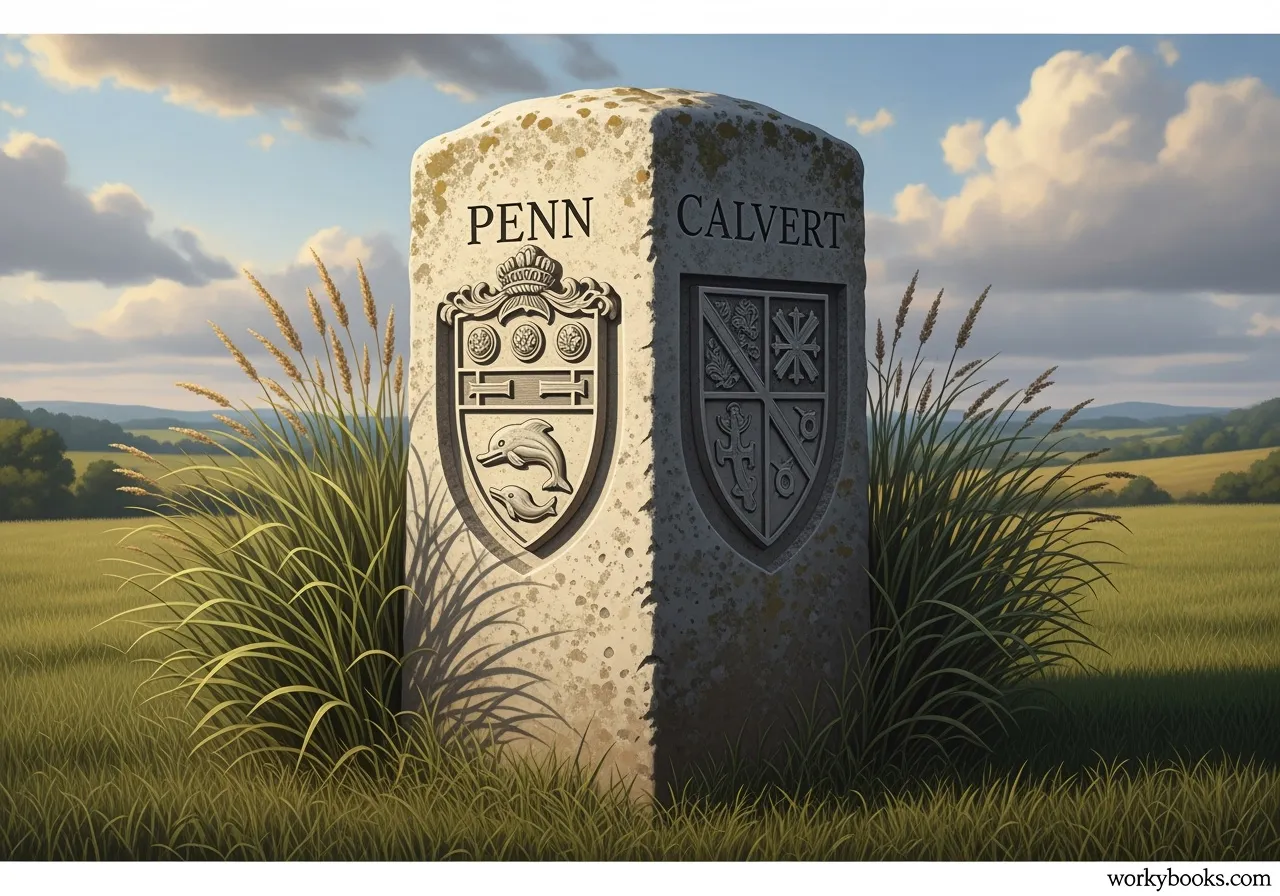Mason-Dixon Line
Explore the history and significance of this important American boundary that shaped the nation!
What is the Mason-Dixon Line?

The Mason-Dixon Line is a boundary line that was drawn between Pennsylvania and Maryland in the 1760s. It's named after the two surveyors, Charles Mason and Jeremiah Dixon, who established the border.
While originally just a simple boundary between colonies, the Mason-Dixon Line later became famous as the symbolic dividing line between the Northern states and Southern states in the United States, particularly during the period before the Civil War.
Key Definition
The Mason-Dixon Line is a demarcation line separating four U.S. states, forming part of the borders of Pennsylvania, Maryland, Delaware, and West Virginia (which was part of Virginia until 1863).
History and Background

The Mason-Dixon Line has a fascinating history that began with a border dispute between two British colonies:
Maryland Charter
King Charles I granted a charter to Cecil Calvert for the Maryland colony, with boundaries that would later cause disputes.
Pennsylvania Charter
William Penn received a charter for Pennsylvania, creating overlapping land claims with Maryland.
Survey Begins
Charles Mason and Jeremiah Dixon began their survey to resolve the boundary dispute between the Penn and Calvert families.
Survey Completed
After four years of difficult work, Mason and Dixon completed surveying the 233-mile boundary.
The survey was an incredible achievement for its time. Mason and Dixon used the stars for navigation and marked the line with stones every mile, with larger "crownstones" every five miles displaying the coats of arms of the Penn and Calvert families.
Where is the Mason-Dixon Line?

The Mason-Dixon Line runs along the following modern state borders:
Pennsylvania-Maryland
The main portion of the line forms the southern border of Pennsylvania with Maryland
Pennsylvania-Delaware
Part of the line forms the arc boundary between Pennsylvania and Delaware
Maryland-Delaware
The line also forms part of the border between Maryland and Delaware
The line begins at the southwestern corner of Delaware and runs north to the Pennsylvania border, then turns west to form the Pennsylvania-Maryland border. The original survey extended 233 miles (375 km) from the Atlantic Ocean to what is now West Virginia.
Significance and Legacy

The Mason-Dixon Line took on greater significance in American history beyond its original purpose as a simple boundary:
Symbolic Division
Became the symbolic dividing line between free states and slave states before the Civil War
Cultural Reference
Used in language to refer to the cultural differences between North and South
Historical Marker
Many of the original stones placed by Mason and Dixon still stand today as historical markers
Did You Know?
The Missouri Compromise of 1820 used the Mason-Dixon Line's westward extension as the boundary between slave and free territories, cementing its place in American history.
Today, the Mason-Dixon Line remains an important historical boundary and is sometimes still referenced when discussing regional differences in the United States. Many of the original stones placed by Mason and Dixon still stand, maintained by historical societies.
Mason-Dixon Line Quiz
Test your knowledge about the Mason-Dixon Line! Answer all 5 questions to see how much you've learned.
Frequently Asked Questions
Here are answers to common questions about the Mason-Dixon Line:
Mason-Dixon Line Trivia
Discover interesting facts about the Mason-Dixon Line!
Advanced Surveying
Mason and Dixon used celestial navigation and advanced mathematics for their time, making their survey one of the most precise of the 18th century.
Not Just a Straight Line
The Mason-Dixon Line includes both a north-south boundary (the "Tangent Line") and an east-west boundary, creating the unusual shape of Delaware's northern border.
In Popular Culture
The phrase "south of the Mason-Dixon Line" is still used today to refer to the Southern United States, showing its lasting cultural impact.
Original Markers
About 130 of the original 230 stones placed by Mason and Dixon still exist today. The stones were made of limestone and weighed 300-600 pounds each.


